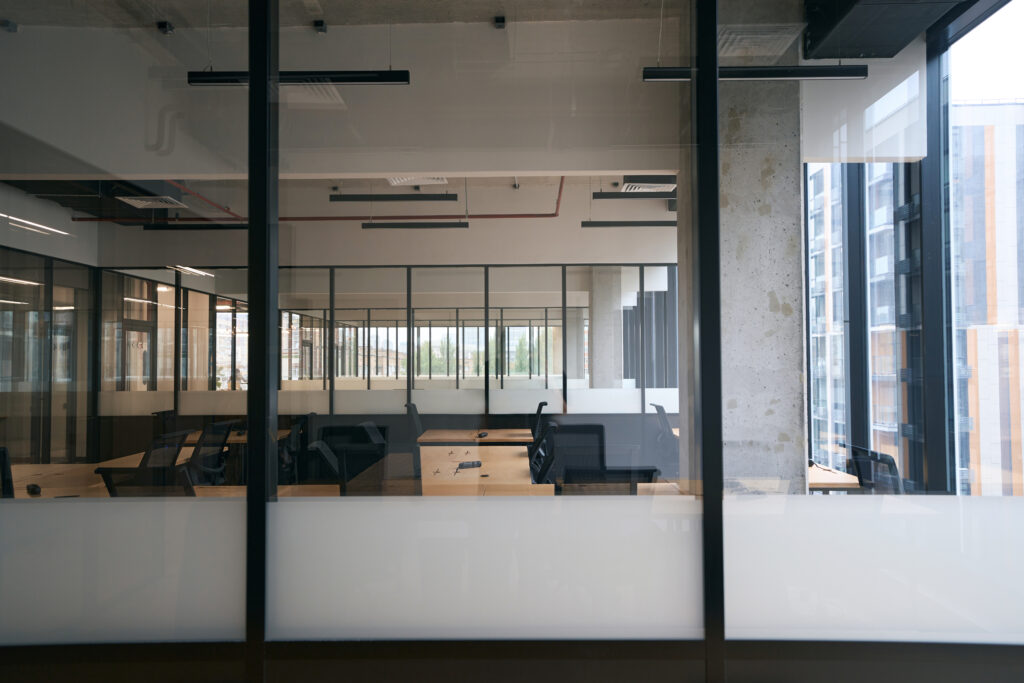The Evolution of Shared Workspace and Its Impact on Commercial Real Estate
As the modern workplace continues to evolve, shared workspace has become increasingly popular among startups, entrepreneurs, freelancers, and other professionals.
A shared workspace is a type of office environment where individuals or small businesses rent individual workstations or office spaces from a larger business.
This blog post will explore the growing trend of shared workspace and its impact on commercial real estate. We will discuss the various benefits of shared workspace, as well as the potential implications for the commercial real estate industry.
The Growth of Co-Working Spaces

Co-working spaces have rapidly grown in popularity in recent years.
In fact, a Global Workspace Association research identified over 22,000 co-working spaces worldwide, and this figure is anticipated to rise.
One factor contributing to the growth of co-working spaces is the rise of the gig economy and freelance work. More people are working for themselves, and co-working facilities provide a professional and collaborative environment for these individuals to work in.
Additionally, co-working spaces offer flexibility in terms of leases and office space sizes. They appeal to small businesses and startups who lack the financial resources or long-term plans to invest in office space.
Another driver of co-working growth is the desire for a sense of community and networking opportunities. Co-working spaces often provide networking events and workshops, creating a sense of community and collaboration among members.
Advancements in technology have also aided the growth of co-working spaces. With the rise of cloud-based computing and virtual office systems, co-working spaces have been able to offer cutting-edge technology and amenities to members.
Overall, the growth of co-working spaces can be attributed to the changing nature of work and the desire for flexible and collaborative work environments. This growth has significant implications for the commercial real estate industry, which we will explore further in the next section.
The Various Types of Co-Working Spaces

As the demand for co-working spaces has increased, the industry has evolved to meet the diverse needs of different types of workers.
Here are the main types of co-working spaces:
- Traditional Co-Working Spaces. These are the original co-working spaces that typically provide a communal work area and various amenities such as meeting rooms, printers, and coffee machines. Members can rent a desk or office for a specific period, usually on a month-to-month basis.
- Boutique Co-Working Spaces. These co-working spaces focus on creating a unique and stylish atmosphere, offering a range of benefits such as free coffee and snacks, wellness classes, and even art exhibitions. These spaces are often more expensive than traditional co-working spaces, but they offer a more upscale and professional environment.
- Corporate Co-Working Spaces. Some large corporations are creating their own co-working spaces for employees. These spaces may include a variety of amenities and are designed to encourage collaboration and innovation.
- Niche Co-Working Spaces. These co-working spaces cater to specific industries or communities, such as creatives, artists, and musicians. They often offer specialized equipment or amenities to meet the unique needs of their members.
- Remote Co-Working Spaces. These co-working spaces are designed for remote workers who need a dedicated workspace away from home. They often provide private offices and meeting rooms and may offer a virtual office address service.
Overall, the variety of co-working spaces available reflects the growing demand for flexible and customizable workspace solutions. As the co-working industry continues to grow and evolve, commercial real estate professionals must stay attuned to the changing needs of workers and businesses.
The Impact of Co-Working Spaces on Commercial Real Estate

The rise of co-working spaces has significantly impacted the commercial real estate industry. Co-working spaces have brought about changes in the way that companies and individuals approach the traditional office setup.
One of the most significant impacts of co-working spaces on commercial real estate is the change in leasing practices. The growth of co-working spaces has challenged traditional leasing models, leading to a shift towards more flexible leasing arrangements. Many commercial real estate companies are now offering more flexible leasing options, including short-term leases and shared office spaces.
The popularity of co-working spaces has also led to increased demand for well-designed office spaces that are attractive and functional. This has led to a change in the way that commercial real estate companies design and build office spaces, with a greater focus on creating environments that encourage collaboration, creativity, and productivity.
Another impact of co-working spaces on commercial real estate is the changing demographics of office tenants. With co-working spaces attracting a wide range of professionals, from freelancers to established businesses, commercial real estate companies have had to adapt to a more diverse tenant base.
Despite these changes, some commercial real estate professionals worry that co-working facilities may eventually oversupply and reduce demand for traditional office spaces. As the co-working business evolves, flexible, well-designed office spaces will be in demand.
The Future of Co-Working Spaces

As the world of work continues to evolve, it is clear that co-working spaces will continue to play an important role in the commercial real estate market. With their emphasis on flexibility, community, and collaboration, co-working spaces are fit to meet the needs of a changing workforce.
One of the trends that is likely to shape the future of co-working spaces is the increasing focus on wellness. As more people become aware of the importance of maintaining a healthy work-life balance, co-working spaces will need to incorporate amenities that support this goal, such as on-site fitness centers, healthy food options, and mindfulness rooms.
Customizing co-working spaces for diverse sectors and professions is another potential trend. Designer, musician, and writer co-working spaces may offer creative resources and equipment.
Finally, the future of co-working spaces is likely to be shaped by advances in technology. As remote work becomes increasingly common, co-working spaces will need to offer cutting-edge technology and infrastructure that enable people to work seamlessly from anywhere in the world.
Despite these changes, the core values of co-working spaces are likely to remain the same: community, collaboration, and flexibility. As the needs of the workforce continue to evolve, co-working spaces will need to adapt to meet these needs while staying true to the values that have made them such a successful part of the commercial real estate market.
Ready to sell your property? Give us a call today and learn more about our professional photography services that can boost your property listing!
Plus, explore our virtual assistant coaching program to level up your business. Don’t forget to tune into our new podcast for even more valuable insights!
